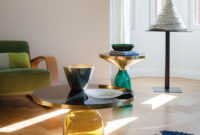The palette is to an artist what the keyboard is to a musician, it is the medium through which an artist expresses himself and as such looking at the palette of an artist can tell us a great deal about how he or she works. If the paints on your palette are not ordered and neat then you run the risk of laying muddy colours on your painting, and having to waste paint which has become mixed unintentionally with others.
Please follow the guide below to avoid this. There are differing palettes for oils and watercolours. If you are using oil then an old style wooden palette with a thumb hole can be used but with watercolours or acrylics it is better to use a modern plastic palette which has recesses, these will hold watery paint and stop it from running into an adjacent colour. When you start to put paint on the paper it is wise to consider where you put the paint on the palette. With oil paint it is easier because the paint takes many hours to dry. Classical artists were trained to arrange the paint as follows. White was placed nearest the thumb hole and then following round in a circle the paints are arranged into the colours of the rainbow and finally black. This very neat arrangement allows all colours to be mixed either on the palette or on the paper or canvas. The white and black are as far away from each other to prevent the colours on the palette becoming muddy.
An example of oils on the palette following these rules would be: Flake white, Cadmium yellow, yellow ochre, raw sienna, cadmium red, burnt sienna, Umber, ultramarine, cobalt blue, viridian and ivory black.
These follow the old rhyme “richard of york gave battle in vain (red, orange, yellow, green, blue, indigo, violet)”. Exactly the same rules apply when using watercolours or acrylics. Obviously the palette you use should have sufficient recesses to hold all the seven colours plus white and black and also with both watercolour and acrylic you should regularly clean the palette completely. This is because as you experiment with colour and tone the resulting colour is “fixed”. With watercolour or acrylic do not spend too much time making a dark tone light or a light tone dark, you are just wasting paint. Clean your palette and start again, always following the rules above. See if by following these tips your paintings take on cleaner brighter hues.







































